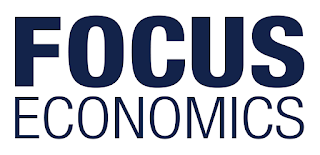Preliminary figures showed the economy suffered its worst contraction on record in the first quarter. The downturn came on the back of frozen business and household activity in the better part of March due to measures adopted by governments to contain the spread of the pandemic. According to data from national statistical institutes, Covid-19 wreaked havoc on both domestic and external demand in France, Italy and Spain, while contractions in smaller Eurozone economies were sizeable but less severe. Prospects for the second quarter are even bleaker, due to protracted lockdown measures, with a bigger blow to activity expected, as suggested by collapsing consumer and business confidence and a diving PMI reading in April. To cushion the economic impact of the coronavirus crisis, on 9 April Euro area ministers rolled out an emergency package worth EUR 540 billion; nonetheless, they remained deeply divided on post-crisis stimulus.
The pandemic will hammer the economy this year. Investment activity will tumble; household spending will plummet amid a surge in unemployment; and external demand will shrivel, also due to a freeze in tourism flows. Moreover, it will lead to a spike in banks’ bad loans and pose risks to debt sustainability in countries with strained public finances. The economy is seen contracting 7.0% in 2020, which is down 2.9 percentage points from last month’s forecast. In 2021, GDP is seen increasing 5.1%.
Harmonized inflation dropped to an almost four-year low of 0.4% in April, on plunging energy prices, from March’s 0.7%. Inflation thus moved further away from the ECB’s target of below, but close to, 2.0%. Going forward, the economic downturn and lower energy prices should keep inflation low, with downside surprises from lockdown-hit demand on the cards. Our panel sees inflation averaging 0.5% in 2020, before picking up to 1.2% in 2021.
On 30 April, the ECB further lowered the rates on long-term liquidity auctions and announced seven additional refinancing operations, as part of efforts to support liquidity conditions and preserve the smooth functioning of money markets. The deployment of further firepower is an attempt to respond to a situation of unprecedented economic collapse in the Euro area. Consensus projects the refinancing rate ending 2020 at 0.00% and 2021 also at 0.00%.
The euro gained some ground against the USD over the past month. On 1 May, the currency ended the day at USD 1.10 per EUR, up 0.8% from the same day in April. Easing safe-haven demand and the Fed’s measures to support dollar liquidity around the world put downward pressure on the USD. Going ahead, the euro is expected to hover around current levels. Our panel sees the euro ending 2020 at USD 1.12 per EUR and 2021 at USD 1.14 per EUR.


